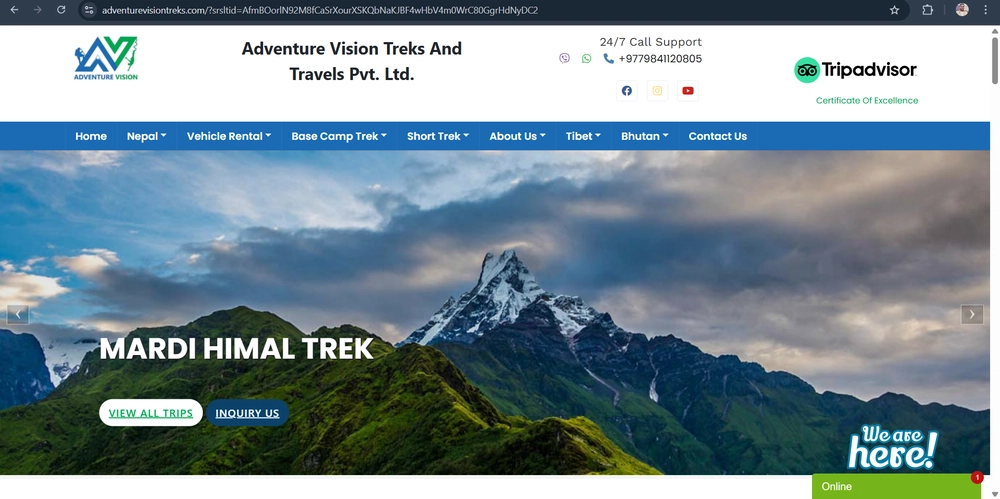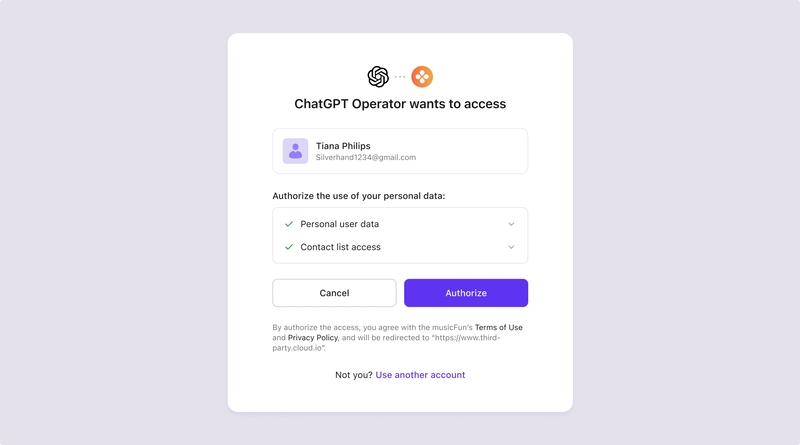How I Built a Scalable Travel Management System and What I Learned
When I first embarked on building a tour and travel management system, I envisioned it to be a relatively simple project. At the time, I thought I could create a few booking features, add a payment gateway, and populate the platform with destination listings. However, as I delved deeper into the process, it became clear that crafting a truly scalable and user-friendly platform involved far more than just writing code. It required a thorough understanding of real-world traveler needs, seamless automation, and most importantly, adaptability to the ever-changing dynamics of the travel industry. Adapting to the Ever-Changing Travel Industry Landscape The travel industry is unlike any other, in that it is constantly evolving. It is driven by fluctuating demands, seasonal variations, and a vast array of diverse user requirements. As a result, a travel management system must be robust and flexible enough to handle a wide range of tasks, such as processing bookings and reservations, offering dynamic pricing models, maintaining user profiles and preferences, automating itinerary generation, and scaling effectively as the user base grows. With these objectives in mind, I began designing the system with an emphasis on scalability, automation, and customization. My goal was to create a platform that could seamlessly handle both simple and complex travel needs while being adaptable enough to evolve with industry trends and user expectations. Choosing the Right Tech Stack for Scalability and Performance One of the primary challenges in building any large-scale platform is ensuring that it can handle increasing traffic and transactions without performance degradation. Scalability was a major priority for me, so selecting the right technology stack was essential. After careful consideration, I decided to use React.js for the front end, ensuring a responsive and seamless user interface. React’s component-based architecture would allow for easy updates and a smooth user experience, making it an ideal choice for dynamic content. On the backend, I chose Node.js paired with Express due to their event-driven, lightweight architecture, which made them perfect for handling high traffic volumes and ensuring optimal performance. For the database, I opted for a hybrid approach, using PostgreSQL for structured data storage and MongoDB for unstructured data. This combination offered flexibility in handling a variety of data types while maintaining efficient data retrieval. To handle the infrastructure, I chose AWS for hosting, leveraging their auto-scaling capabilities to accommodate growing user traffic. Each decision was made with an eye on performance, cost-efficiency, and ensuring the best possible user experience. Creating a Seamless Booking Experience: The Power of Real-Time Updates A travel platform is only as good as its booking system, and ensuring that users can quickly and easily book their travel experiences was a critical aspect of the project. I focused on implementing real-time availability updates using WebSockets. This technology enabled instantaneous updates on available bookings, ensuring that users always had access to the most up-to-date information. Integrating secure and reliable payment gateways, such as Stripe and PayPal, was another crucial step. I made sure the payment process was smooth, with minimal steps for users to complete their booking. The faster users could confirm their bookings, the less likely they were to abandon their purchase, so a streamlined checkout process became a top priority. I also incorporated a personalized user interface, with intuitive navigation and automated suggestions based on user behavior and preferences. The result was a booking system that didn’t just work but did so quickly and efficiently—helping to boost conversions and reduce cart abandonment. Automating Itineraries and Invoices for Enhanced User Convenience One of the most time-consuming aspects of managing a travel platform is generating itineraries for users. Manually creating itineraries for each user wasn’t a scalable solution, especially as traffic grew. To address this, I implemented AI-powered itinerary generation based on users' preferences, interests, and previous travel history. This allowed for highly personalized recommendations, offering travelers tailored experiences based on their unique needs. In addition to itineraries, I automated the generation of invoices. By integrating an automated system for generating invoices, users could easily track their expenses. PDF downloads and email notifications were set up to ensure seamless communication and transparency, which further enhanced the user experience. Ensuring Speed and Efficiency as User Traffic Grows As the number of users on the platform increased, maintaining speed and efficiency became paramount. A slow-loading site can drive users away, so I focused on improving the overall speed of the platform.

When I first embarked on building a tour and travel management system, I envisioned it to be a relatively simple project. At the time, I thought I could create a few booking features, add a payment gateway, and populate the platform with destination listings. However, as I delved deeper into the process, it became clear that crafting a truly scalable and user-friendly platform involved far more than just writing code. It required a thorough understanding of real-world traveler needs, seamless automation, and most importantly, adaptability to the ever-changing dynamics of the travel industry.
Adapting to the Ever-Changing Travel Industry Landscape
The travel industry is unlike any other, in that it is constantly evolving. It is driven by fluctuating demands, seasonal variations, and a vast array of diverse user requirements. As a result, a travel management system must be robust and flexible enough to handle a wide range of tasks, such as processing bookings and reservations, offering dynamic pricing models, maintaining user profiles and preferences, automating itinerary generation, and scaling effectively as the user base grows.
With these objectives in mind, I began designing the system with an emphasis on scalability, automation, and customization. My goal was to create a platform that could seamlessly handle both simple and complex travel needs while being adaptable enough to evolve with industry trends and user expectations.
Choosing the Right Tech Stack for Scalability and Performance
One of the primary challenges in building any large-scale platform is ensuring that it can handle increasing traffic and transactions without performance degradation. Scalability was a major priority for me, so selecting the right technology stack was essential. After careful consideration, I decided to use React.js for the front end, ensuring a responsive and seamless user interface. React’s component-based architecture would allow for easy updates and a smooth user experience, making it an ideal choice for dynamic content.
On the backend, I chose Node.js paired with Express due to their event-driven, lightweight architecture, which made them perfect for handling high traffic volumes and ensuring optimal performance. For the database, I opted for a hybrid approach, using PostgreSQL for structured data storage and MongoDB for unstructured data. This combination offered flexibility in handling a variety of data types while maintaining efficient data retrieval.
To handle the infrastructure, I chose AWS for hosting, leveraging their auto-scaling capabilities to accommodate growing user traffic. Each decision was made with an eye on performance, cost-efficiency, and ensuring the best possible user experience.
Creating a Seamless Booking Experience: The Power of Real-Time Updates
A travel platform is only as good as its booking system, and ensuring that users can quickly and easily book their travel experiences was a critical aspect of the project. I focused on implementing real-time availability updates using WebSockets. This technology enabled instantaneous updates on available bookings, ensuring that users always had access to the most up-to-date information.
Integrating secure and reliable payment gateways, such as Stripe and PayPal, was another crucial step. I made sure the payment process was smooth, with minimal steps for users to complete their booking. The faster users could confirm their bookings, the less likely they were to abandon their purchase, so a streamlined checkout process became a top priority.
I also incorporated a personalized user interface, with intuitive navigation and automated suggestions based on user behavior and preferences. The result was a booking system that didn’t just work but did so quickly and efficiently—helping to boost conversions and reduce cart abandonment.
Automating Itineraries and Invoices for Enhanced User Convenience
One of the most time-consuming aspects of managing a travel platform is generating itineraries for users. Manually creating itineraries for each user wasn’t a scalable solution, especially as traffic grew. To address this, I implemented AI-powered itinerary generation based on users' preferences, interests, and previous travel history. This allowed for highly personalized recommendations, offering travelers tailored experiences based on their unique needs.
In addition to itineraries, I automated the generation of invoices. By integrating an automated system for generating invoices, users could easily track their expenses. PDF downloads and email notifications were set up to ensure seamless communication and transparency, which further enhanced the user experience.
Ensuring Speed and Efficiency as User Traffic Grows
As the number of users on the platform increased, maintaining speed and efficiency became paramount. A slow-loading site can drive users away, so I focused on improving the overall speed of the platform. To achieve this, I implemented load balancing, which distributes incoming traffic across multiple servers to prevent overloading any single server.
Caching mechanisms, such as Redis, were also put in place to speed up data retrieval and reduce the time it took to fetch information from the database. Additionally, I optimized database queries to ensure that users received information as quickly as possible, even during peak traffic times.
Scalability, however, wasn’t just about adding more servers. It was about optimizing the system to handle large volumes of traffic without compromising on performance. This meant streamlining both backend processes and frontend elements to ensure the platform ran smoothly under any conditions.
Handling Seasonal Traffic Spikes Without Downtime
Seasonality plays a huge role in the travel industry, with specific times of the year seeing massive spikes in traffic. During peak seasons, traffic could surge unexpectedly, putting significant pressure on the platform. To avoid downtime, I leveraged AWS auto-scaling, which automatically adjusts the number of servers based on traffic demand. This ensured that the system could handle the influx of users without crashing.
I also enabled CDN caching to reduce load times and improve performance, even during periods of high demand. By caching static assets like images and videos, I was able to speed up page load times significantly. Furthermore, I optimized API calls to reduce unnecessary server requests, ensuring that the system remained responsive even when traffic surged.
Prioritizing Security for Financial Transactions.
Given the sensitive nature of financial transactions on a travel platform, ensuring robust security was a top priority. I implemented end-to-end encryption (SSL/TLS) for all transactions, ensuring that users’ payment details were kept safe from prying eyes. Additionally, I incorporated two-factor authentication (2FA) for user accounts, adding an extra layer of protection.
To further enhance security, I implemented fraud detection algorithms that flagged any suspicious activity. These measures ensured that users could book their travels with confidence, knowing that their financial information was secure.
Improving User Experience Through Simplified Design and Testin
g
In the early stages, user feedback revealed that many users found the platform overwhelming. The interface was functional but not intuitive, which created a barrier to a seamless booking experience. To address this, I conducted extensive user testing, gathering feedback from real users to identify pain points and areas for improvement.
Based on this feedback, I simplified the UI design, streamlining the booking flow and removing unnecessary steps. I also introduced tooltips to guide users through the process and added live chat support for instant assistance. These small changes made a huge difference in user satisfaction, helping to improve conversion rates and reduce frustration.
Key Takeaways: Lessons Learned in Building a Scalable Travel System
Reflecting on my journey of building this travel management system, I've gained a number of valuable insights. The most important lesson learned is the need to think like a traveler. A successful travel management system must always prioritize user convenience, ensuring a smooth and intuitive experience that meets their needs at every step.
Scalability should never be an afterthought; it should be embedded in the design from the very beginning. Automation plays a crucial role in enhancing efficiency, while robust security measures help foster trust. Most importantly, user feedback is vital for continuous improvement, helping to keep the platform relevant and effective.
Whether you're planning a trek on the Manaslu Circuit Trek, renowned for its breathtaking landscapes, or embarking on any other adventure, platforms like Adventure Vision Treks offer tailored solutions to meet your specific needs. A dependable and user-friendly system ensures that every traveler’s journey is seamless, from booking to the final steps of their unforgettable trek.
Your Turn: Share Your Challenges and Solutions in Building Travel Platforms
Building a scalable travel management system wasn’t just a technical challenge—it was a valuable lesson in understanding user behavior, overcoming technical hurdles, and refining business strategy. If you’re working on something similar, I’d love to hear about your experiences. What challenges have you faced? How did you solve them? Share your thoughts in the comments or reach out—I’m always up for a tech talk!







































































































































































![[The AI Show Episode 143]: ChatGPT Revenue Surge, New AGI Timelines, Amazon’s AI Agent, Claude for Education, Model Context Protocol & LLMs Pass the Turing Test](https://www.marketingaiinstitute.com/hubfs/ep%20143%20cover.png)





































































































































![From drop-out to software architect with Jason Lengstorf [Podcast #167]](https://cdn.hashnode.com/res/hashnode/image/upload/v1743796461357/f3d19cd7-e6f5-4d7c-8bfc-eb974bc8da68.png?#)










































































































.jpg?#)





























_ArtemisDiana_Alamy.jpg?#)














































































-xl.jpg)













![Yes, the Gemini icon is now bigger and brighter on Android [U]](https://i0.wp.com/9to5google.com/wp-content/uploads/sites/4/2025/02/Gemini-on-Galaxy-S25.jpg?resize=1200%2C628&quality=82&strip=all&ssl=1)












![Apple Rushes Five Planes of iPhones to US Ahead of New Tariffs [Report]](https://www.iclarified.com/images/news/96967/96967/96967-640.jpg)
![Apple Vision Pro 2 Allegedly in Production Ahead of 2025 Launch [Rumor]](https://www.iclarified.com/images/news/96965/96965/96965-640.jpg)
































































































































